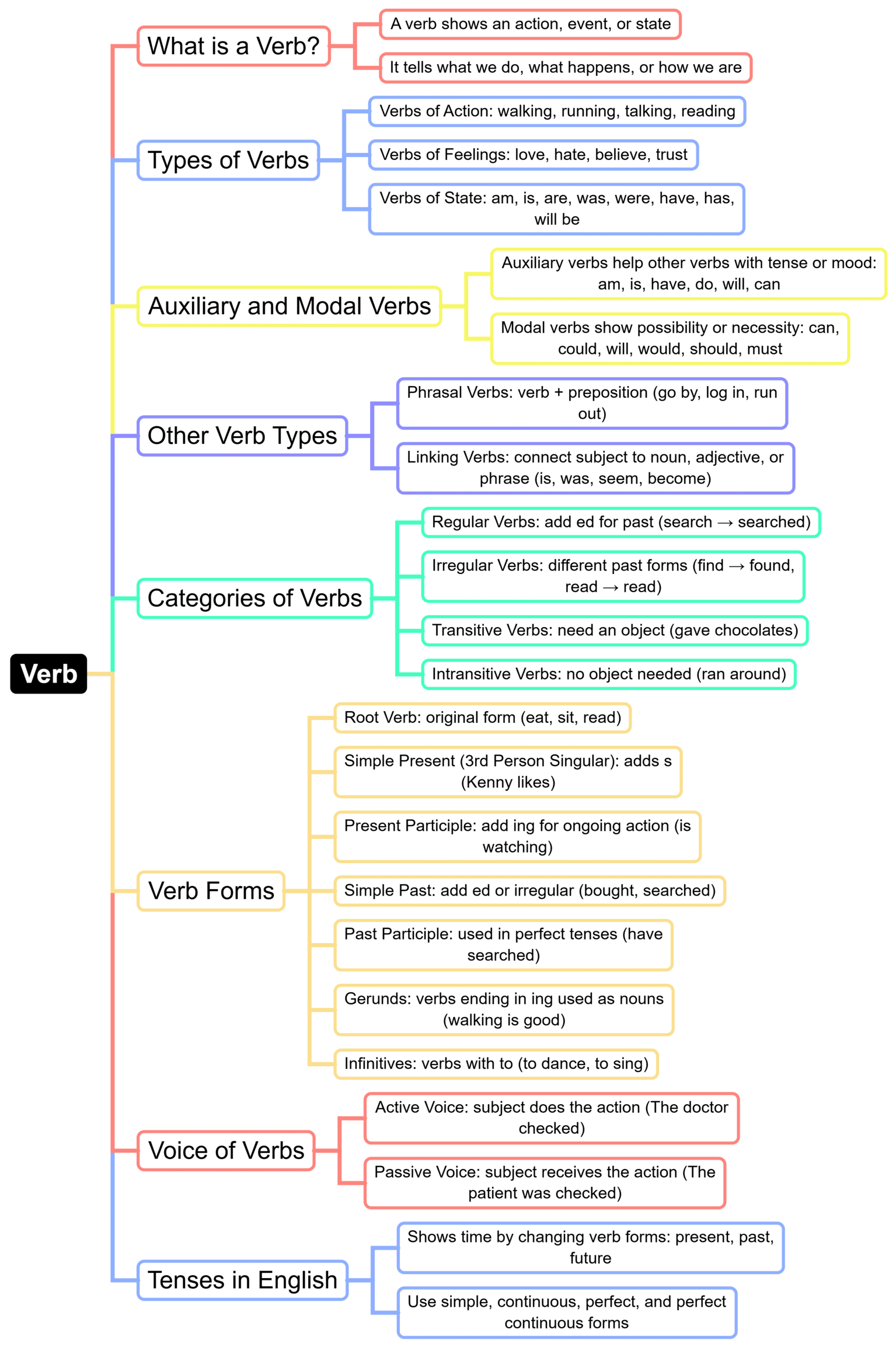CTET & State TET Exam > CTET & State TET Notes > English Language & Pedagogy for CTET & TET Exams > Mind Map: Verb
Mind Map: Verb | English Language & Pedagogy for CTET & TET Exams - CTET & State TET PDF Download

The document Mind Map: Verb | English Language & Pedagogy for CTET & TET Exams - CTET & State TET is a part of the CTET & State TET Course English Language & Pedagogy for CTET & TET Exams.
All you need of CTET & State TET at this link: CTET & State TET
|
47 videos|208 docs|47 tests
|
FAQs on Mind Map: Verb - English Language & Pedagogy for CTET & TET Exams - CTET & State TET
| 1. What are verbs and why are they important in English grammar? |  |
Ans. Verbs are action words that describe what the subject of a sentence is doing. They are crucial in English grammar because they help convey the action, state, or occurrence in a sentence, making the meaning clear and complete. Without verbs, sentences would lack essential information, making it difficult to understand the message being conveyed.
| 2. How do tenses affect the meaning of a sentence? |  |
Ans. Tenses indicate the time at which an action takes place, such as past, present, or future. They affect the meaning of a sentence by providing context about when the action occurred. For example, "I walk" (present tense) indicates a current action, while "I walked" (past tense) shows that the action has already happened. This helps the reader or listener understand the timeline of events.
| 3. Can you explain the difference between regular and irregular verbs? |  |
Ans. Regular verbs follow a consistent pattern when changing tenses, typically adding "-ed" for the past tense (e.g., "walk" becomes "walked"). Irregular verbs do not follow this pattern and change in unpredictable ways (e.g., "go" becomes "went"). Understanding this difference is important for correctly using and conjugating verbs in sentences.
| 4. What are the three main tenses in English, and how are they formed? |  |
Ans. The three main tenses in English are the present, past, and future. The present tense is formed using the base form of the verb (e.g., "play"), the past tense is typically formed by adding "-ed" to regular verbs (e.g., "played"), and the future tense is formed using "will" followed by the base form of the verb (e.g., "will play"). Each tense serves to indicate when an action takes place.
| 5. How can students practice using verbs and tenses effectively? |  |
Ans. Students can practice using verbs and tenses by engaging in various activities such as writing sentences in different tenses, completing fill-in-the-blank exercises, and participating in conversations that require the use of specific verbs. Additionally, reading books and identifying verbs in different contexts can enhance their understanding and application of verb usage in sentences.
Related Searches





















